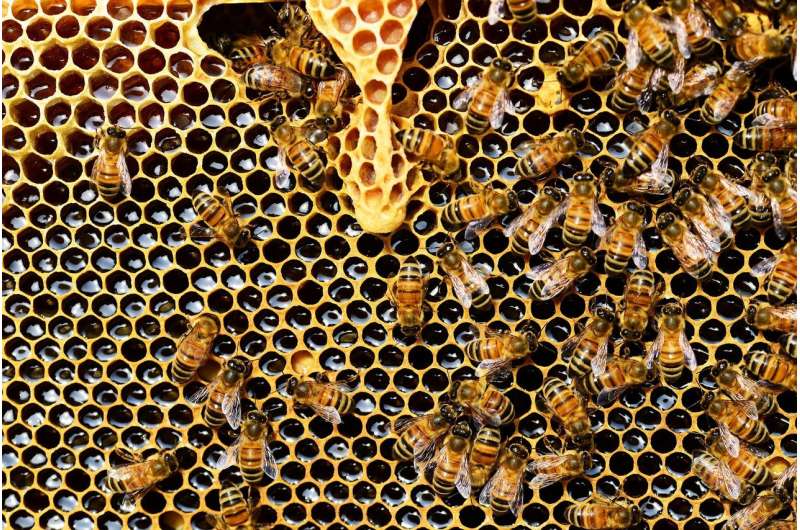Study examines insecticide's effects on honey bees

Neonicotinoid insecticides, including Syngenta's insecticide thiamethoxam, have been used globally on a wide range of crops through seed, soil, and foliage treatments.
A large-scale study, carried out in close coordination with the Environmental Protection Agency and published in Environmental Toxicology & Chemistry, demonstrates that residue levels in pollen and nectar from thiamethoxam-treated seeds do not harm bees and have no effect on colony survival. The research included individual honey bees—adults and larvae—and 84 honey bee colonies.
"This robust study definitively establishes a threshold below which there are no harmful effects to honey bee colonies," said lead author Jay Overmyer, PhD, of Syngenta Crop Protection. "This information can be used to assess the potential risk of honey bee colonies exposed to thiamethoxam residues in pollen and nectar from all types of use patterns."
More information: Jay Overmyer et al, Thiamethoxam honey bee colony feeding study: Linking effects at the level of the individual to those at the colony level, Environmental Toxicology and Chemistry (2017). DOI: 10.1002/etc.4018
Journal information: Environmental Toxicology and Chemistry
Provided by Wiley



















